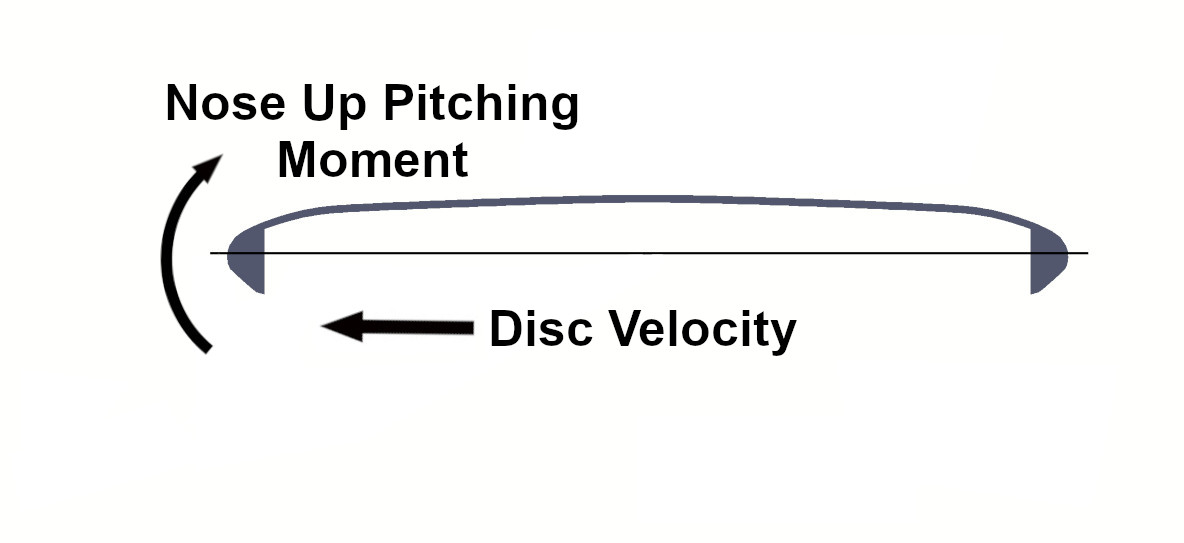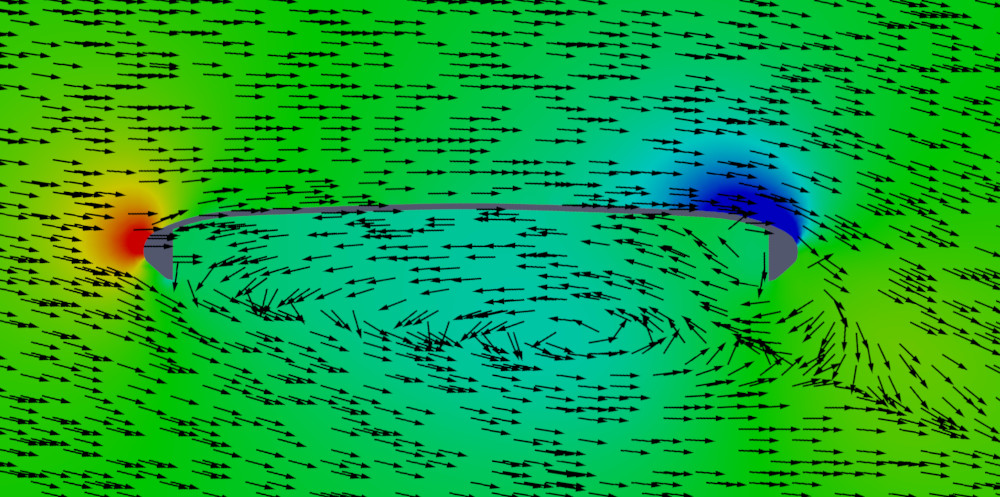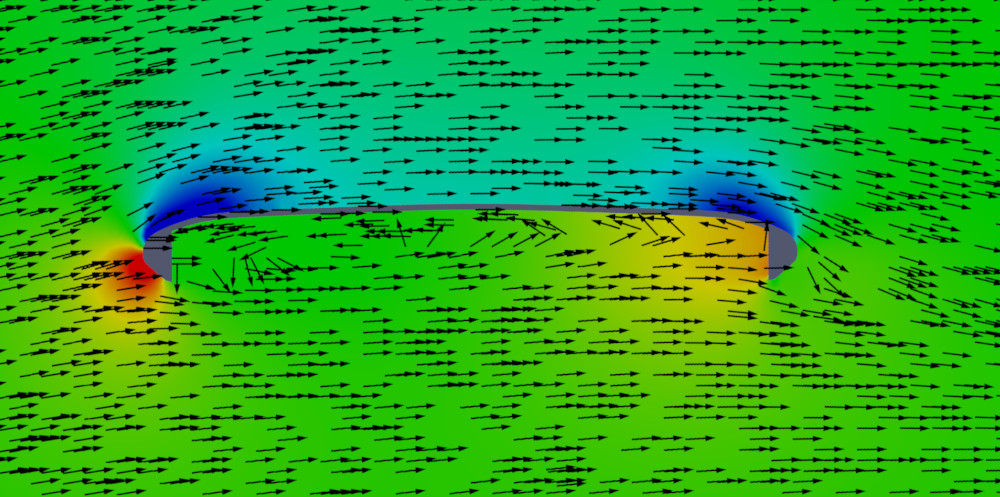Disc Turn
May 10, 2019Any experienced disc golfer knows that discs don't fly perfectly straight. For a full flight RHBH throw, the disc will initially turn to the right before fading to the left at the end of the throw. You can use turn/fade to your advantage if you understand when and why they occur. Let's start by understanding some of the vocabulary.
Angle of Attack
The most important concept in the aerodynamics of a disc is the angle of attack, sometimes abbreviated AoA. This angle is measured between the plane of the disc and the direction of the oncoming air, see the diagram below. A positive angle of attack occurs when the underside of the disc is exposed to the oncoming air. A zero angle of attack is when the plane of the disc is aligned with the oncoming air. The angle of attack is always changing as the disc flies through the air.
Angle of attack is often confused with the vertical angle of release. A disc can be thrown upwards at a 45° and have an angle of attack of zero. Remember than angle of attack is relative to the oncoming air, not the ground.

Pitching Moment
The pitching moment is an aerodynamics term for a force on the disc that is trying to rotate the nose of the disc up or down. Pitching moments occur due to imbalances in how the disc generates lift. If the lift force is more towards the front of the disc, a nose up pitching moment is created. A nose down pitching moment is the opposite. It occurs due to the lift force occurring near the back of the disc.

Gyroscopic Precession
See the video below for a common physics demonstration highlighting the unintuitive behavior that occurs when forces are applied to a spinning object. In the video, gravity should make the free end of the bike axle rotate towards the ground. However, due to gyroscopic precession, the wheel rotates 90° offset from what is expected. This effect occurs in disc golf discs for pitching moments. A nose down pitching moment is expected to rotate the nose downward. Instead, gyroscopic precession causes the disc to roll to the right (high speed turn) for a RHBH throw. A nose up pitching moment causes the disc to fade to the left.
Turn
Based on the description of gyroscopic precession, we know that high speed turn happens due to a nose down pitching moment. What causes the nose down pitching moment? It all goes back to the angle of attack. When a disc is moving through the air at high speed, it generates a lot of lift. That lift causes the disc to rise in the air which causes a negative angle of attack.
The figure below is generated from fluid dynamics simulations of a disc with a -10° angle of attack. The different colors represent the air pressure. Red is high pressure and blue is low. The combination of high pressure on the top side of the nose of the disc and the low pressure on the top of the tail of the disc cause a nose down pitching moment. The magnitude of the nose down pitching moment depends on the particular shape of the disc and the disc speed. A faster thrown disc gets more lift, has a more negative angle of attack, and experiences more high speed turn.

Fade
Now that we understand high speed turn, let's look at fade. As the disc moves through the air, it slows down due to drag. The disc can also slow down due to gravity if it thrown upwards. Once the disc loses speed, it also loses most of its lift and begins to drop. A dropping disc is moving downwards onto the air below which creates a positive angle of attack.
The figure below is for the same conditions as we looked at for turn above, but with a 10° angle of attack. For a positive angle of attack, the high pressure moves to the underside of the nose and a low pressure area develops on the top of the nose. The combination of these two pressure on the nose create a nose up pitching moment which, through gyroscopic precession, causes the disc to fade. It's also important to note the effect of rim width. The force on the nose of the disc which causes the pitching moment is related to the pressure times the surface area. Wide rim discs have more surface area and thus see larger pitching moments. This explains why drivers have more extreme turn/fade than discs with smaller rims like putters.

Summary
We've covered a lot of ground in this article. Let's go back over what we've found. A fast moving disc turns because lift is high which creates a negative angle of attack, a nose down pitching moment, and high speed turn. The opposite is true for slow moving discs which causes them to fade. These trends are true for any general disc, but the shape of a particular disc determines to what extent the disc turns/fades.
Nobody thinks about all this physics when playing a round. Here are some more tangible conclusions. If you find yourself getting too much turn, your options are to throw slower, throw higher, or find a more overstable disc. Too much fade? Try throwing lower and faster or using a more naturally understable disc. You can also reduce your fade by throwing discs with smaller rim widths like mids and putters.
